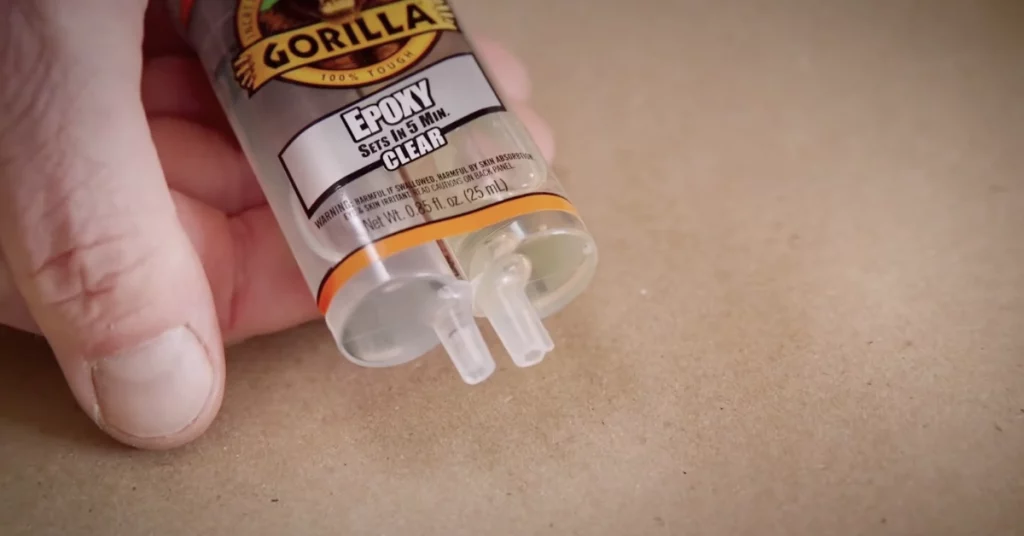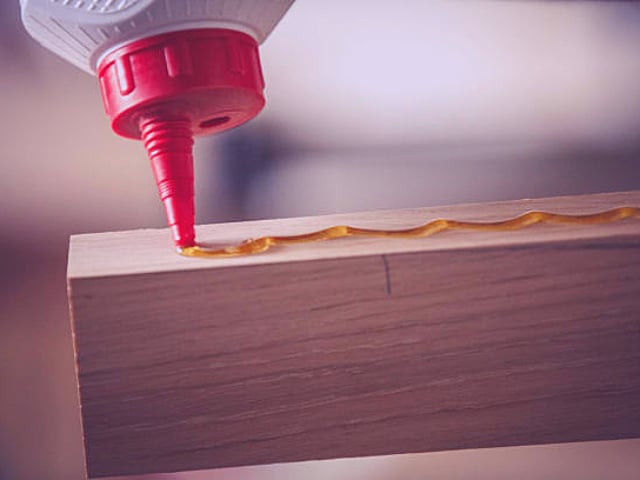When you’re faced with gluing two pieces of wood together, it can be hard to know exactly which type of glue to use.
Most people don’t realize that there are actually two main choices, each with pros and cons. Epoxy and wood glue have their place, so it’s essential to understand what makes them different before choosing the right one for the job.
This guide will help you learn the difference between Epoxy vs. wood glue so that you can choose the right one for your project or application in no time!
Read More: Epoxy vs. Super Glue
Epoxy vs. Wood Glue
Though epoxy and wood glue is effective adhesives, each has benefits and drawbacks that make it better suited for specific applications. Epoxy is a stronger and more durable adhesive, making it ideal for repairing broken items or bonding dissimilar materials. On the other hand, wood glue is more flexible and easier to work with, making it better suited for projects that require a more forgiving adhesive.

Read More: Construction Adhesive vs. Epoxy
Advantages of Using Epoxy
The top 10 advantages of using Epoxy are as follows:-
1) Epoxy is durable and can withstand many different types of stresses.
2) It is waterproof, which means it won’t be affected by moisture or weathering.
3) Epoxy has a high shear strength and doesn’t crack easily, even when stressed over long periods.
4) It is an effective sealant for gaps where two pieces of material come into contact.
5) A disadvantage to using Epoxy is that it takes more time to set than wood glue.
6) Epoxies also have a higher tensile strength than wood glue, meaning they resist elongation better than wood glue.
7) One other benefit to using epoxy instead of wood glue is that while you might need to use clamps during the drying process with wood glue, you don’t need any clamping device when working with Epoxy.
8) Another advantage to using Epoxy is that it comes in various colors, so you can match your project with the color scheme you want.
Read More: Wood Glue Vs. Super Glue

Advantages of Using Wood Glue
Wood glue is a clear adhesive that can be used for various projects. It’s most often used on wood and other porous materials, but it can also be used to bond metal, glass, or plastic.
Epoxy is not as strong as wood glue, but it can fill gaps where wood glue cannot reach. So, when you’re working with different materials and need an adhesive that will work with everything from plastics to hardwoods, Epoxy could be your best option.
Wood glue is usually more affordable than Epoxy, making it a good choice for smaller projects where money may be tight. In some cases, wooden boards may have been nailed together without adhesive.
If the boards are still in good condition and don’t appear to have loosened, then using just some new nails might do the trick. If they feel loose, using wood glue would be the best solution because it will hold better and make the project last longer.
If you’re working with scrap pieces of wood, tack them together with some clamps so they’ll stay put while the wood glue dries. For items such as birdhouses or furniture made of many parts, I recommend investing in something stronger like Epoxy, so there aren’t any accidents down the line!
Read More: Wood Glue vs. White Glue
Tips For Working With Wood Glue
Wood glue is a type of adhesive that you use to join pieces of wood together. It can be used for anything from repairing furniture to building things like sheds and tables. It comes in various forms, including liquid and powder, and it can dry clear or have an amber hue. Here are some tips for using wood glue.
Make sure surfaces are clean before applying the glue. It would be best to wipe off dirt with a damp cloth and rough sand spots with sandpaper.
Apply enough pressure to have good contact between the two pieces joined—this will ensure they adhere well.
Allow the glue to dry according to manufacturer instructions, then remove any excess with a spatula. If you’re not satisfied with your work or if there is any excess glue on the surface of your project, you can apply paint over it or wash away the dried glue by soaking the surface in water.
Just make sure you don’t submerge the entire object! Another tip when working with Epoxy is always to let it set overnight before handling your project.
Tips For Working With Epoxy
It is highly recommended to use Epoxy for outdoor surfaces and large projects. Epoxies have a much longer shelf life than wood glue, so if you are storing the project for a long time before starting it, it is best to go with Epoxy.
However, if you are making something to be used in a short time (i.e., within 24 hours), or if you need something that will be flexible but not waterproof, then wood glue is better because it dries faster. Epoxy has no smell, while some types of wood glue may have an unpleasant odor.
Lastly, epoxies take more time to dry- typically 3-6 hours, depending on how thick the layer was applied.
Read More: Acrylic vs. Epoxy Adhesive
Last Opinion
Wood glue is a natural adhesive that can be used for various projects. It has a long setting time, which means it will take some time to dry.
Epoxy is an adhesive that can be used to bond two materials together. It sets quickly and dries clear, so you don’t have to worry about checking on it or worrying if there are bubbles on top of your project.
When choosing between epoxy and wood glue, consider what you want your end product to look like. Wood glue is a great option if you want something quick drying with no mess.

